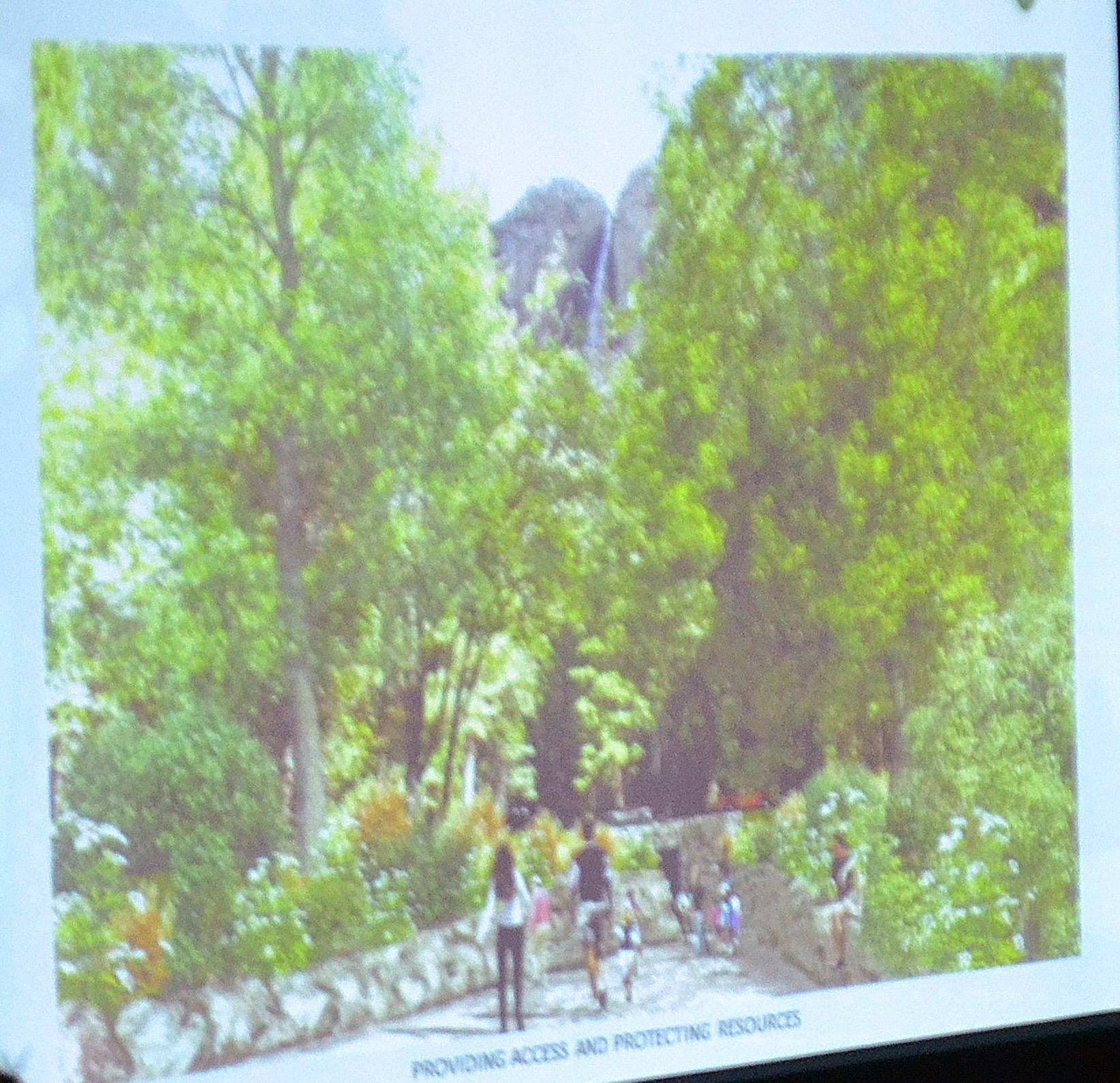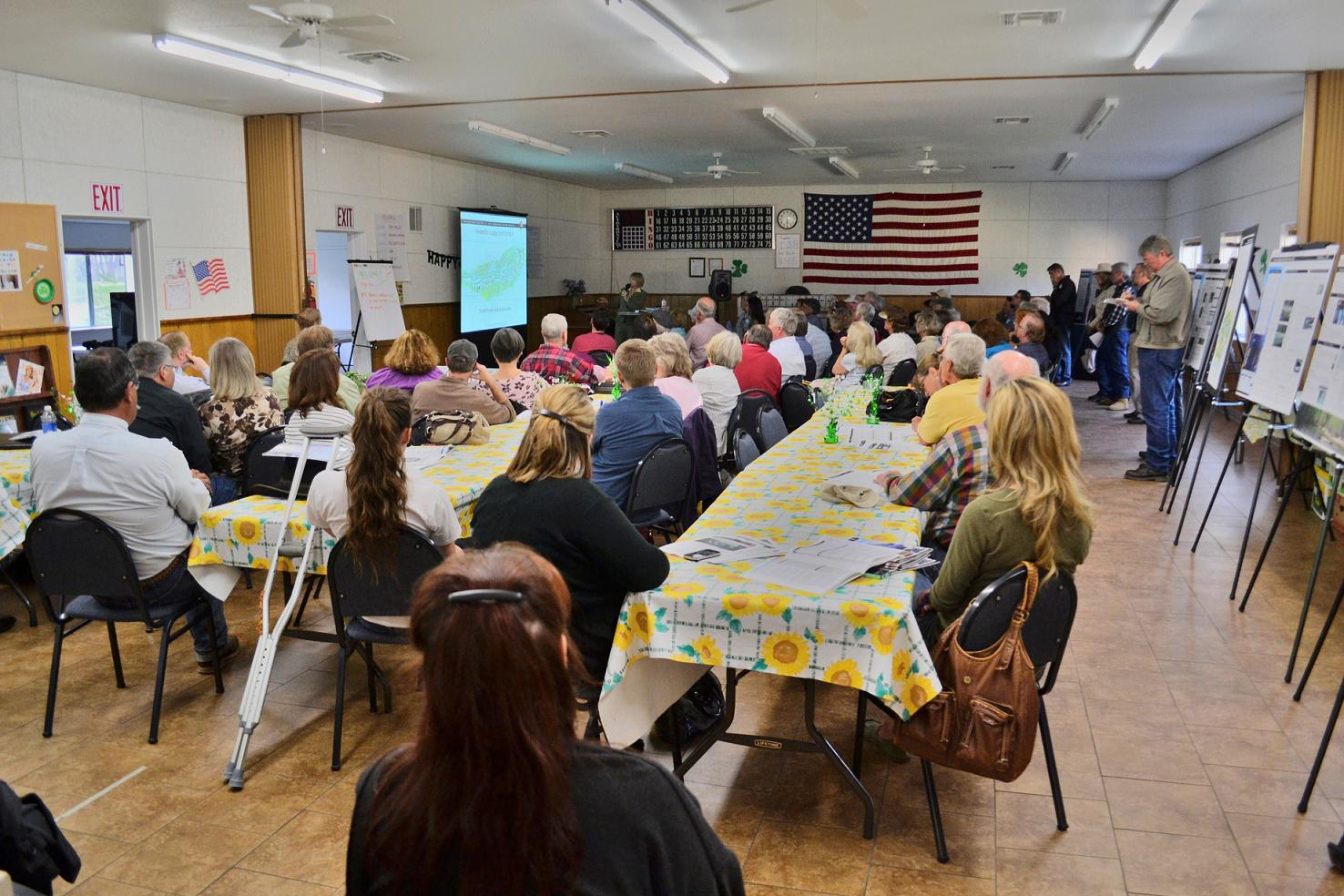OAKHURST – There was a packed house Thursday night, Mar. 14, at the Oakhurst Senior Center as people came out to learn and ask questions about changes coming to Yosemite National Park.
With the designation of the Tuolomne and Merced rivers as Wild and Scenic in 1984 and 1987 respectively, the National Park Service (NPS) has been working to identify what have been termed “Outstanding River Values,” and develop a plan to protect and enhance those resources.“We also need to provide for public recreation and resource uses which do not adversely impact or degrade those values,” said Yosemite’s Division Chief of Planning Kathleen Morse, who presented an overview of the Preferred Alternative #5 to the group.
It is a balancing act that has taken place over many years, and through much litigation. The NPS is up against a July 2013 deadline set by the courts for completion of the new management plan.
Of critical concern for many at the meeting were the proposals to eliminate a list of “commercial” enterprises in the valley, including day trip horseback rides, bike and raft rentals.
Morse says those activities will still be available – visitors can bring bikes, rafts and horses into the park – but the rental facilities would be eliminated.
“We are not closing the stables. Only the day ride component will change, and only in the valley,” said Morse. “There will be no changes to private use of stock, and the day rides at Wawona will continue as usual.”
However, as some pointed out, few people are able to haul bikes and rafts along on their visit, and ever fewer can bring horses, especially with the parking limitations.
“It would seem that you are making a choice to allow a small group of litigants to deprive others of these traditional recreational opportunities,” said Wawona resident Max Stauffer. “Those who are economically disadvantaged or physically disabled will not be able to enjoy these activities if they have to bring their own equipment, and it smacks of social injustice.”
Many feel the decision to eliminate these rental actitivies is being driven by the language of Footnote #5 in the 2008 Decision from the 9th Circuit Court, which states in part:
“To illustrate the level of degradation already experienced… …we need look no further than the dozens of facilities and services operating within the river corridor, including but not limited to, the many swimming pools, tennis courts, mountain sports shops, restaurants, cafeterias, bars, snack stands and other food and beverage services, gift shops, general merchandise stores, an ice-skating rink, an amphitheater, a specialty gift shop, a camp store, an art activity center, rental facilities for bicycles and rafts, skis and other equipment, a golf course and a dining hall accommodating 70 people.”
Attendees questioned just how much weight this footnote should be given, and whether it is a mandate from the court to do away with these things, or should just be taken as guidance.
Since recreation is an Outstanding River Value that must be protected and enhanced along with the natural splendor of the park, many question how far the NPS is going in eliminating what are seen as important components of the visitor’s experience.
“What we’re trying to do is be reasonable about what that means,” said Morse, addressing the Footnote #5 issue. “Removing duplicate retail outlets and eliminating others allows us to lower the amount of employees we have to support with housing, which is a scarce resource in the valley. We’re trying to strike a balance and reduce the footprint without compromising the visitor’s experience.”
Another important part of the plan is creating better circulation of the traffic systems in and around Yosemite Village – redesigning failing intersections, eliminating pedestrian/vehicle conflicts, and implementing smarter parking designs. The congestion and confusion at the east end of the valley has been addressed with several proposals:

-redesign the road system to remove confusing intersections and create better traffic flow with a roundabout
-construct a pedestrian underpass to eliminate vehicle/pedestrian bottlenecks near Yosemite Falls
Other parts of the plan include the removal of Sugar Pine bridge; the replacing of temporary, substandard employee housing; and eliminating the Curry Village Ice Skating Rink.
Morse reiterated the fact that this document is a draft, and that the NPS is still taking input from the public and making adjustments as they learn what people feel most strongly about. She encouraged everyone to attend meetings, learn more about the plan on the website, and to submit their comments in writing to insure their voice is heard.
The National Park Service will continue to gather and consider public input through the rest of the comment period, which ends Mar. 18 for the Tuolomne River Plan, and Apr. 18 for the Merced River Plan.



